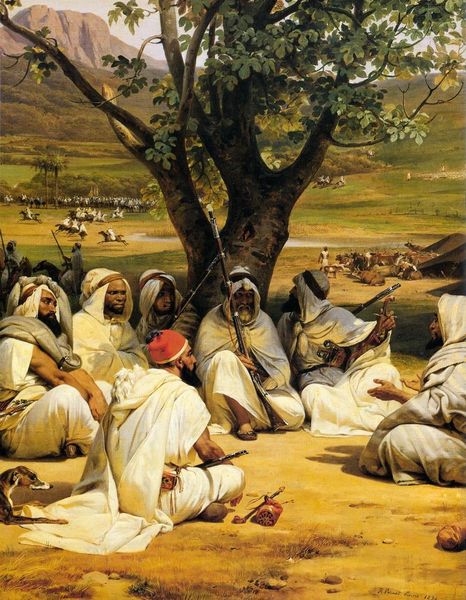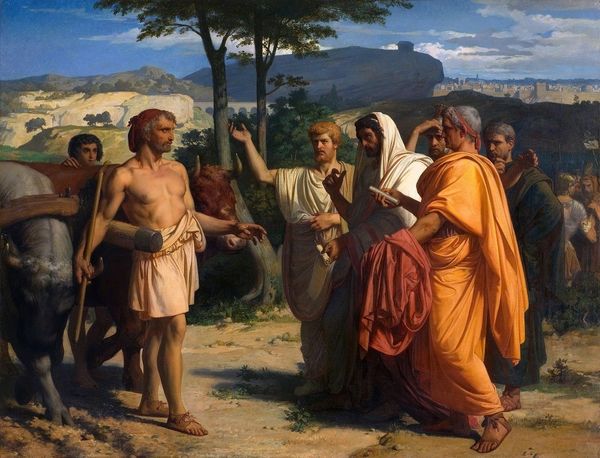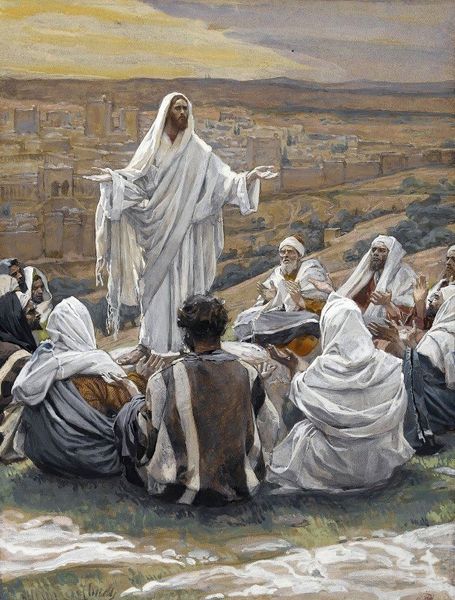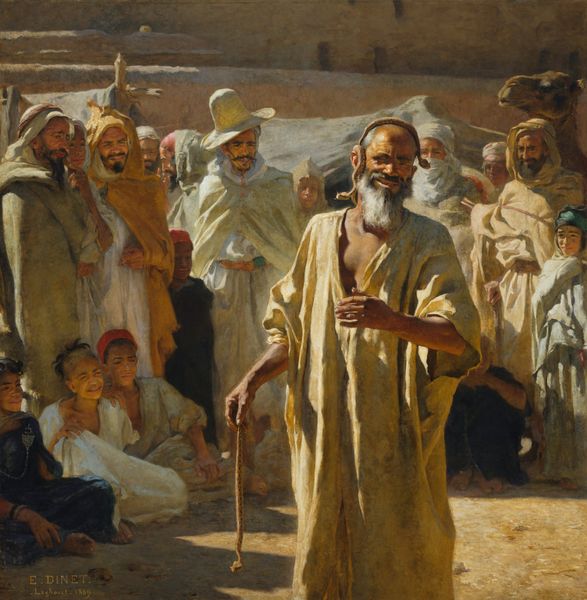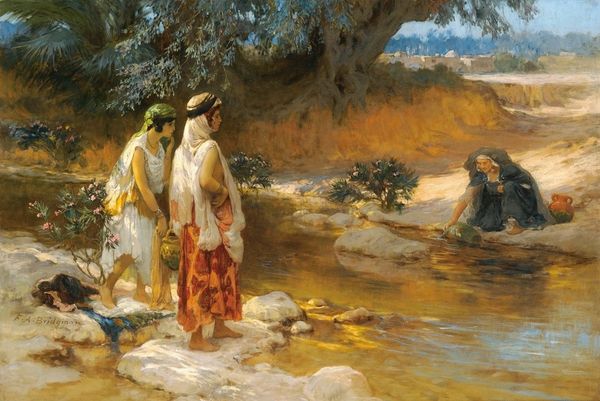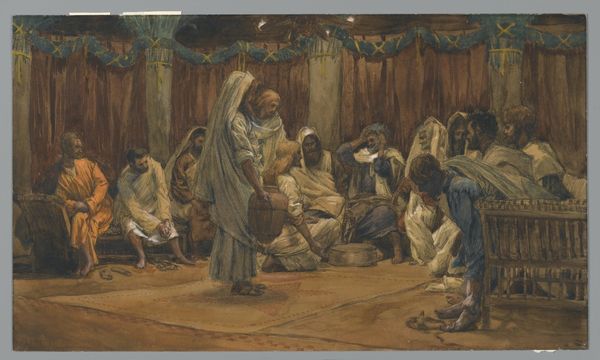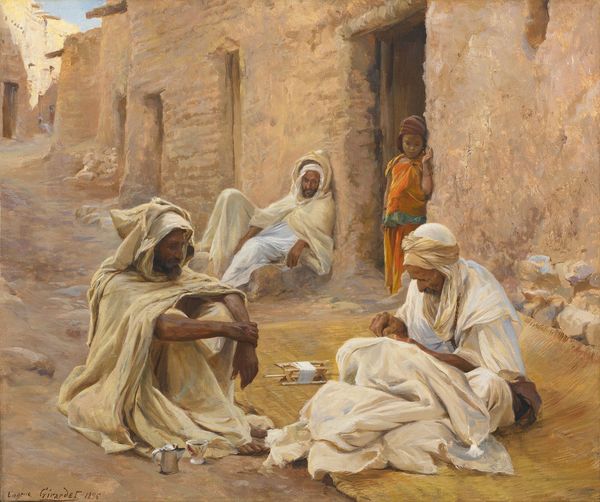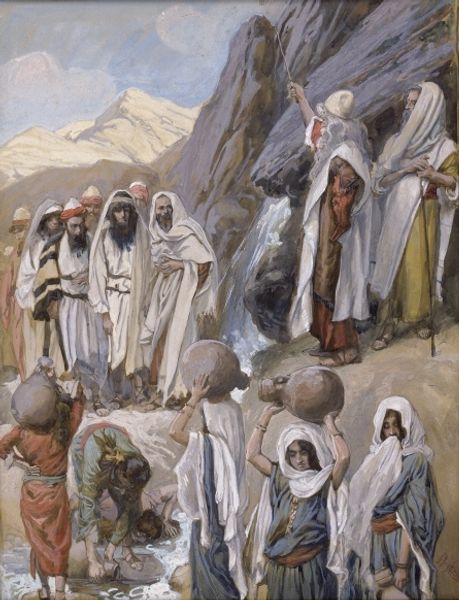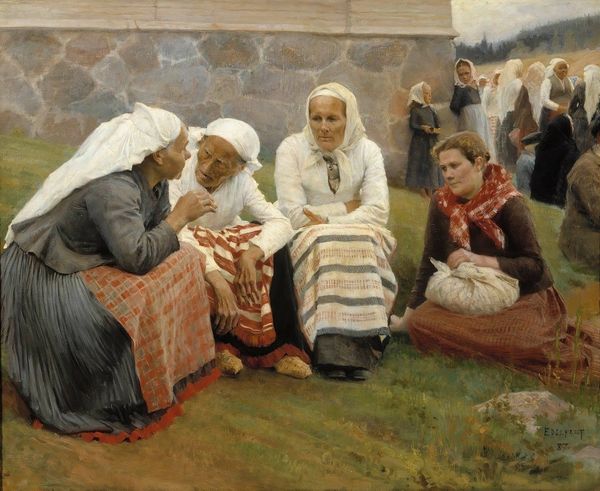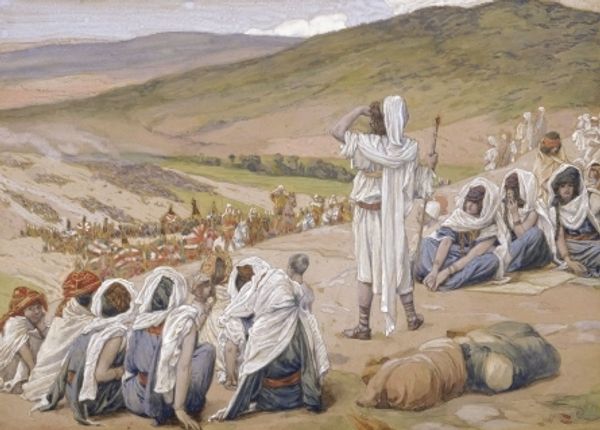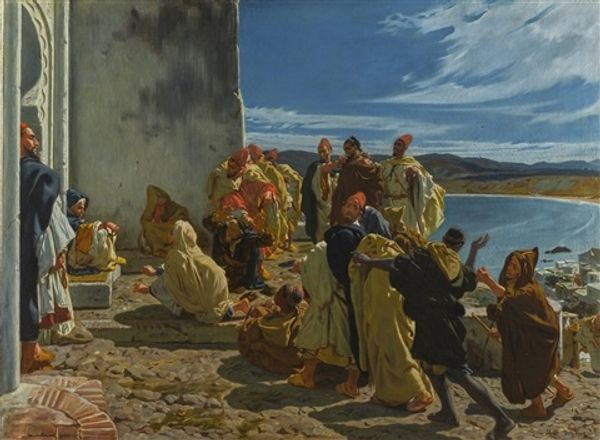
oil-paint
#
gouache
#
figurative
#
fantasy art
#
oil-paint
#
landscape
#
figuration
#
oil painting
#
romanticism
#
orientalism
#
genre-painting
#
watercolor
Copyright: Public Domain: Artvee
Editor: This is Horace Vernet's "The Arab Tale-teller," painted in 1833. The composition feels both intimate, like we're eavesdropping on a private gathering, and grand, with the sweeping landscape in the background. It evokes a sense of timeless tradition, but I'm also wondering how accurate this depiction is. What do you see in this piece? Curator: I see a potent example of Orientalism, a 19th-century Western fascination with and often distorted representation of the "Orient." Vernet, like many European artists of the time, was interested in depicting Arab culture, but often through a lens that reinforced existing power dynamics. The details - the clothing, the pipes, even the leisurely gathering - speak to a Western construction of the "exotic East." Editor: So, beyond the surface representation, you're suggesting there's a deeper political context at play? Curator: Precisely. Consider the colonial context of the time. France was expanding its influence in North Africa. Paintings like this didn't just depict a scene; they helped to legitimize the colonial project by creating an image of the "Orient" as passively receptive to Western influence. The 'tale-teller' isn't just sharing stories; he's a symbol in a much larger narrative of cultural appropriation. Editor: That makes me think about who has the power to tell whose story. It's not just about the scene depicted, but who's doing the depicting and why. Curator: Exactly! It raises critical questions about representation, cultural exchange, and the subtle ways that art can reinforce ideologies. How does this understanding shift your initial reaction? Editor: It adds a layer of complexity, almost a tension. The romanticism is still there, but it's now intertwined with questions about power and perspective. I see now that the painting isn't just a window into another culture, but also a reflection of the West's own biases. Curator: And recognizing those biases is the first step toward a more critical and informed understanding of both the artwork and the historical moment that produced it.
Comments
No comments
Be the first to comment and join the conversation on the ultimate creative platform.
